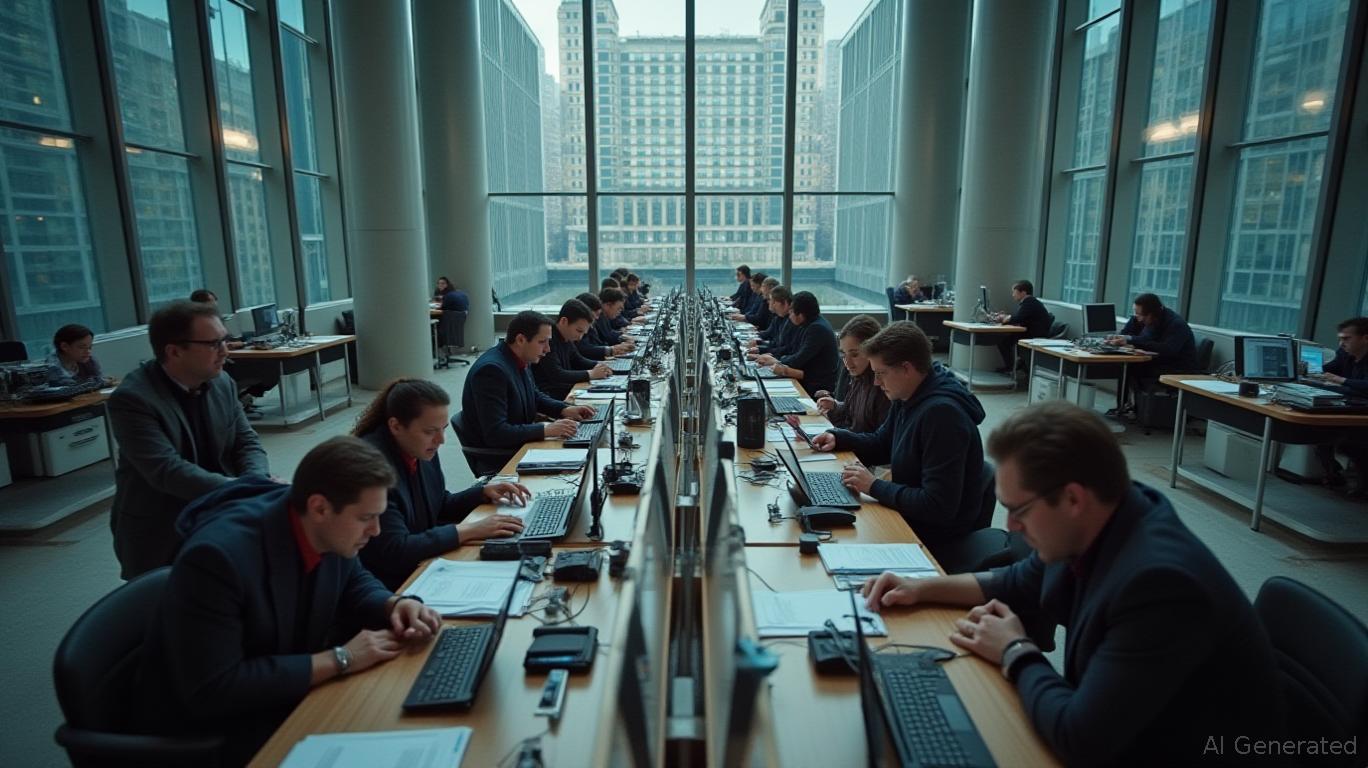Remote Work Strategies: A Litmus Test for Banking's Future
The remote work revolution, once a pandemic-driven experiment, has now become a defining battleground for
. As banks navigate the tension between in-office collaboration and the demands of a distributed workforce, their strategies are revealing stark differences in operational priorities and talent management. For investors, these choices are no longer just about culture—they're critical indicators of long-term competitiveness.Take Standard Chartered (STAN) and JPMorgan Chase (JPM) as case studies. While Standard Chartered has embraced hybrid work as a core strategic asset, JPMorgan is doubling down on full-time office attendance. The divergence highlights two visions of banking's future—and two distinct risks for shareholders.
The Flexible Playbook: Standard Chartered's Hybrid Edge
Standard Chartered's approach to remote work is less about accommodating employees and more about redefining its workforce DNA. By 2025, the bank has solidified a policy that allows 90% of its 85,000 employees to choose hybrid, remote, or office-based roles. This flexibility is underpinned by technology like its AI-driven “Talent Marketplace,” which matches employees with projects based on skills, and a coaching culture that emphasizes trust over micromanagement.
The results? A 72% employee satisfaction rate in work-life balance—up from 63% in 2018—and a workforce that's 60% hybrid-ready across regions like Singapore, the U.K., and the U.S. (where acceptance hits 76% and 79%, respectively). Crucially, Standard Chartered has also reduced real estate costs by minimizing physical office demands during refurbishments, such as its London headquarters, while maintaining productivity.

Investment Angle: Standard Chartered's strategy aligns with the growing preference for hybrid work, particularly among tech-savvy and global talent. Its adaptability could translate into lower turnover costs and a more agile workforce. However, will test whether markets reward flexibility or penalize perceived “softness” on culture.
The Office Rebound: JPMorgan's Gamble on In-Person Collaboration
JPMorgan's stance could not be more contrasting. Since 2024, the bank has mandated a full return to five-day office schedules for hybrid employees, citing the irreplaceable value of in-person mentorship and innovation. CEO Jamie Dimon's argument—that spontaneous hallway conversations and junior staff development require physical proximity—has become the North Star of this policy.
Yet the execution has been rocky. Desk shortages, noisy workspaces, and health concerns have sparked employee frustration, with some calling it a “desperation to cling to outdated norms.” While JPMorgan invests in premium office amenities like its new Manhattan skyscraper (featuring yoga rooms and food halls), the policy's success hinges on whether these upgrades can offset the allure of competitors offering flexibility.

Investment Angle: JPMorgan's bet is a high-risk, high-reward play. If in-person collaboration drives superior decision-making and client relationships, its stock could outperform. But will signal whether the policy is retaining talent or driving defections. The bank's real estate costs—already rising due to infrastructure upgrades—could also squeeze margins if occupancy rates falter.
The Bottom Line: Adaptability as a Competitive Moat
For investors, the key question is: Which model better positions banks for a future where talent is scarce and costs are scrutinized?
Standard Chartered's flexibility offers clear advantages in attracting and retaining diverse, geographically dispersed talent—a must for a global bank. Its lower real estate exposure and emphasis on skill-based work via platforms like Talent Marketplace could future-proof its operations. However, the risk lies in execution: Can hybrid teams maintain cohesion, and will markets value its cultural bets?
JPMorgan's office-centric model, meanwhile, may be a losing proposition in a world where employees increasingly demand work-life balance. The bank's stock could face headwinds if turnover rises or if its premium offices fail to justify higher costs. Yet, if in-person collaboration truly drives superior financial outcomes, it could pay off handsomely.
Investment Takeaways
- Buy STAN if: You believe hybrid work is here to stay and that adaptability trumps traditional office culture. Its stock could benefit from lower costs and a younger, tech-focused workforce.
- Hold JPM if: You trust Dimon's vision that in-person interaction fuels JPMorgan's dominance in high-touch sectors like wealth management and investment banking. But monitor turnover and margin trends closely.
- Watch: The broader financial sector's shift toward hybrid policies. States like California's four-day RTO mandate for public workers hint at regulatory risks, while private-sector flexibility (Massachusetts ranks highest) may pressure banks to adapt.
In the end, remote work strategies are no longer just about where employees sit—they're about where banks stand in the fight for talent and efficiency. For investors, this is a choice between betting on the past or banking on the future.

Comments
No comments yet